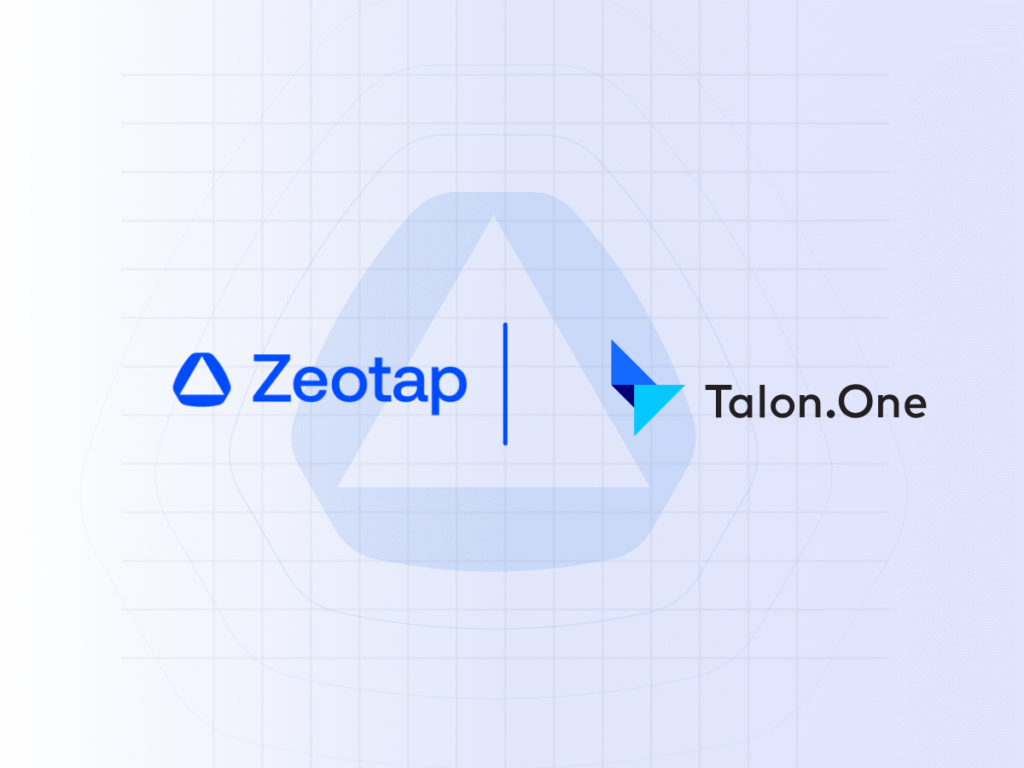
With the rapidly evolving telecommunications landscape, CDPs should not be considered optional. In fact, CDPs for Telcos are essential to meet the needs of today’s consumers. By providing a unified view of customers, enabling personalisation and better engagement orchestration, CDPs can boost loyalty and drive growth. As Telcos leverage customer data efficiently, they can identify at-risk customers and take proactive measures to reduce churn – all while improving customer satisfaction.
In this blog post, we will explore the top challenges telecommunications companies face, and how CDPs make data-driven strategies simple.
1. The inefficient management of Telcos’ customer data
Telcos are companies that have huge volumes of data, stemming from multiple sources – often spanning around the world. Based on their reach, legacy tools, and strategies around company data management, it’s normal for data to not be used efficiently.
It’s incredibly common for large telecommunications companies to rely on legacy technologies and strategies that unintentionally, or intentionally, silo valuable first-party data. Quick examples of this are restrictive campaign management software, disparate on-site data sources that IT departments maintain, or simply not having standardised procedures for logging workflows and results across teams.
To showcase the potential breadth of data assets Telcos have, consider this: most Telcos utilise a CRM and a data warehouse, and also aggregate customer data from website visits, existing customer data from store visits, and ongoing marketing campaigns. At scale, you can quickly realise the immensity of these datasets. While it’s true massive datasets provide critical insights – the path to making data actionable is quite a feat.
It’s critical for Telco companies to find all data sources across their organisation, establish new protocols to ingest it, clean it, and make it uniform in nature. Customer data platforms (CDPs) easily provide the tools to make this possible, and unlock new opportunities for their teams.
2. CDPs eliminate silos and Unify customer data
One of the main challenges that telecommunications companies face is unifying their data. It’s common for Telco companies to rely on old technologies – this leads to siloed first-party data. The problems usually boil-down to not having standardised procedures that facilitate data aggregation, and teams using different tools for logging workflows and results.
This leads to fragmented data within the organisation, making it difficult to analyse and aggregate across departments like marketing, billing, and customer service. These challenges start compounding as you consider Telco companies’ global reach – and the common goal of being able to learn from campaigns and outcomes.
With this in mind, Telco’s engineering teams are tasked with developing new protocols to ingest data, clean it, and make it uniform. This is such an important step to addressing siloes; it represents the bedrock for making data usable down-stream, ultimately empowering marketers to execute data-driven campaigns.
3. Unified customer profiles for an enhanced targeting
The path to data unification can be monstrous without the help of a CDP. CDPs weave together data across channels, focusing on gathering information that can be linked to individual users to build constantly updated customer profiles. Additionally, they are capable of ingesting data from both online and offline sources seamlessly, without the need for pre-existing data matching processes.
CDPs enable a single view of all customers across the brand, any owned sub-brands, and even global regions. This centralised dataset provides a true real-time 360-degree understanding of customers, their preferences, and differentiated behaviours across all touchpoints.
With this level of insight, markers can actually understand consumer identity across channels, and make better informed engagement decisions based on past interactions. With a strong first-part data strategy in place, Telco marketers can also ensure their one-to-one targeted campaigns continue, despite GDPR and cookie depreciation, and evolving privacy regulations.
What’s amazing is, that the customer profiles are not a one-time effort, they are an ongoing real-time effort. The profiles are constantly updated with purchase behaviour, relevant browsing data, touch points on the Telco website, etc. All these insights are stored in each customer’s unique profile within the CDP, ensuring their future marketing engagements can be personalised.
A real example of CDP implementation benefits for Telco
As we said, CDPs offer Telcos innovative customer data management tools for seamless data integration and collection.
For an example of this in practice, let’s consider a multi-national telecommunications provider. This business has massive amounts of customer data stored across the company – fragmented by old systems and tools. Because of the nature of how older systems are set up, data often isn’t shared across teams or departments; and if it is, it is very slow.
By implementing a CDP for Telcos, the data quickly becomes un-siloed. It can be woven together to create individual-level, dynamically updated customer profiles for existing audiences and new prospects. With these profiles, marketers can then create audience segments and activate them across other channels such as paid media, SMS marketing, customer service tools and even website personalisation.
The end result is the ability to not only manage data in a compliant and structured way but also to be able to efficiently deliver targeted, customised experiences.
4. Enhanced marketing personalisation for Telcos with CDPs
The next big challenge Telcos face is around personalised marketing campaigns. Without unifying data across the organisation, it becomes almost impossible to deliver tailored experiences to deeply valued customers.
Today’s shoppers have high expectations, and want brands to personalise interactions consistently – actually, data from Precis Digital found that 48% of people prefer personalised ads. By unifying customer data from various channels and touchpoints, a CDP enables businesses to create a holistic view of each customer and ensure campaigns are uniquely aligned with their needs.
An example of this is, if a Telco marketer wants to run a campaign aimed at acquiring new customers, they should really know which of their audience sets is already a paying customer. The marketing campaign should not target those people. Without access to unified consumer profiles and data, marketers really have no way of knowing who they are engaging – this leads to customers being annoyed with irrelevant ads. A better approach would be to leverage first-party audience segmentation insights from a CDP, then only target non-customers with this campaign. In tandem, the marketer can create a second campaign aimed at existing customers with the goal of upselling them for new solutions.
For more information on how telecommunications businesses can save marketing budget thanks to better audience segmentation, read our case study with Virgin Media O2
Another advantage of developing unified customer profiles is that Telcos can ensure consistent and seamless engagement experiences across all channels – regardless if it’s online, in-app, or in-store. This makes it so when consumers switch between channels during their interactions with a Telco, the experience remains consistent, synchronised and up-to-date with where they left off.
5. Reducing Reliance on IT Departments
Another common challenge for Telcos is around enabling teams to easily glean the information independently, without constantly asking IT departments for support.
Most of the legacy tools used by large Telco companies are complicated and technical. In reality, today’s marketers need access to solutions that work quickly and intuitively. They need streamlined approaches to get critical insights that guide their campaigns.
Without CDPs, markers are lost when it comes to pulling data and creating unique segments for campaigns. Imagine that a Telco marketer wants to activate data on several platforms. Running an omnichannel campaign without a CDP is a very difficult thing to pull off – the campaign would need to be manually pushed into different channels. From there all data and interactions would need to be manually logged and put back into whatever data management system the Telco was using – this results in a heavy task for engineering and IT teams. This perpetuates issues around marketers not being able to find the right segments for specific use cases quickly – and continues causing issues around non-uniform and clean data.
From a marketing perspective, this leads to dissatisfied customers because of a lack of personalisation.
6. Predictive Analytics and Retention Strategies
The last challenge for Telcos that we will explore in this blog post is the necessity to efficiently utilise their vast amount of customer data in order to produce better data analysis and accurate data-driven future strategies.
Telcos leveraging CDPs can, in fact, use predictive analytics to identify at-risk customers, and take proactive measures to prevent churn. By developing a predictive analytics model using historical data, Telcos can set parameters to identify patterns associated with churn. This is done by the company creating their own prediction algorithm, or working with a partner company that offers these capabilities, and feeding in key consumer data from the CDP. From there, the companies can implement proactive retention strategies, like targeted offers and improved customer support. These approaches ultimately boost customer satisfaction and foster loyalty.

Conclusion
There are many challenges telecommunications companies face when it comes to efficiently making their data actionable. However it’s not impossible. By using a CDP, Telcos can tackle issues around siloed data, and can empower engineering teams to establish unified protocols. Additionally, CDPs play a pivotal role in creating real-time, comprehensive customer profiles, enhancing targeted marketing efforts – benefitting both the company and its customers. The need for personalised campaigns is met through the seamless integration of data, allowing marketers to work independently, reducing reliance on IT departments. As Telcos embrace CDPs, they not only address these challenges but unlock the full potential of their marketing campaigns, boosting ROI and customer satisfaction.





